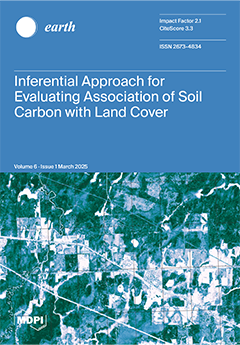The concept of nature-based solutions (NBS) is widely promoted as an approach to effectively counteract climate change and land degradation (LD) as well as simultaneously add environmental and socio-economic benefits. To have a worldwide impact from NBS, it is important to consider potential
[...] Read more.
The concept of nature-based solutions (NBS) is widely promoted as an approach to effectively counteract climate change and land degradation (LD) as well as simultaneously add environmental and socio-economic benefits. To have a worldwide impact from NBS, it is important to consider potential land and soil resources at various scales, including administrative units (e.g., country, state, county, etc.). Nature-based solutions are considered by many United Nations (UN) initiatives, including the Paris Agreement and the UN Convention to Combat Desertification (UNCCD). Currently, there is no consensus on how to define NBS and their indicators. The innovation of this study is that it defines and evaluates soil- and land-based NBS potential while suggesting indicators for land- and soil-based NBS using the contiguous United States of America (USA) as an example. This study defines potential land for NBS as the sum of the individual satellite-identified areas of barren, shrub/scrub, and herbaceous land covers, which are linked to climate and inherent soil quality (SQ), so that NBS could be implemented without changing other land uses. The potential soil for NBS, based on SQ, is a subset of land available for potential NBS. As of 2021, anthropogenic LD affected 2,092,539.0 km
2 in the contiguous USA, with 928,618.0 km
2 (15.1% of the contiguous US area) of actual potential land for NBS. The contiguous USA had a negative balance between anthropogenic LD and actual potential land for NBS to compensate for anthropogenic LD of −1,163,921.0 km
2. Thirty-seven states also exhibited a negative balance for LD compensation with Iowa having the worst balance of −124,497.0 km
2. Many states with positive anthropogenic LD and NBS balances showed that most of the potential NBS land was of low SQ and, therefore, may not be suitable for NBS. Planning for NBS should involve a feasibility analysis of “nationally determined NBS” (NDNBS) through site and context-specific NBS.
Full article





